Watch your head, try to squeeze through that crowd, where’s the art? No that a bin! Does this pavilion have wi-fi? Jump that queue, “excuse me do you know who he is?”,Flash your press pass, grab a coffee, where’s the party? Where’s a bench? My feet hurt, its time for Todd Fuller‘s wrap up of the 55th Venice Biennale Pavilions from the Venice Vernissage.
The greatest artwork of the Venice Biennale is no doubt its own Vernissage, a four day extravaganza which books out Venice with all the movers and shakers of the art world. So many Artists, Gallerists, Curators and Directors descend on the small island that it really is at risk of sinking. This years exhibition features 88 pavilions not just in the main venues of the Giardini and Arsenale but also scattered across the island. There are also numerous pop up events, art prizes, parties, performances, talks, book and magazine launches, did I mention the parties?
At this point we have no doubt heard of the stand out pavilions, those we look to every year. The German, Danish, French, American and English pavilions and of course they all impressed. But what about the other 84 pavillions?
It was in the Russian pavilion that I experienced a moment that was almost spiritual. After being halted by a bald headed buff door guard (how very Russian) we were ushered in to a high ceilinged room. Above us, in an elegant suit, poised on a beam like an angel, sat a man in a saddle. This is the entrance piece to Vadir Zakhorov‘s ‘Danae‘, an installation referencing the Greek myth in which Zeus’ seduces Danae by means of golden shower. As you stand below the majestic Russian model he Chews peanuts in a way that was spectacular, with sheer grace before he drops the shells to form a pile below. The inane act is captivating and spellbinding possibly due to the absurd nature by which we encounter it. It was the most beautiful chewing of nuts I have ever seen (there’s a phrase I never thought I would write). As we continue through the space we encounter a room in which gold coins drop from the ceiling straight through the hole in the floor to the room below. From our vantage point, we watch women with clear umbrellas collect the coins below, there is a clear danger as the coins ricochet from their brollies onto the huge pile. The golden shower conjures delight in the exhibition viewers and there is sheer joy in the faces of those who lean on the balustrade watching the farce below. In the next room we encounter the ritual of another suited figure loading coins collected by a pulley through a hole in the floor from the gallery beneath. He loads the coins into a mechanical conveyor belt to feed the machine above our head in the previous room.
On the lower level we are greeted with a man giving out umbrellas and we are invited to enter the room with the pile of coins falling from above. We are about to embark on the same ritual which we have just viewed from the upper level. We have become engaged components in the capitalist mechanism which the artist has constructed. Or so we thought. Now we realise that only women can don an umbrella to enter the room to collect their booty. Apparently Zeus is only interested in women, maybe the Russians never heard of Ganymede. My male companion and I feel discrimination and ponder what the Russians would do if confronted with a transsexual or someone in the act of transitioning, but that is besides the point. As a whole it is a great performance and installation, one of play and of ritual, old stories become a modern day microcosm. We must be involved in order for the interlocking rooms turned installation to function. Like Danae, we are trapped by greed and become blissfully unaware that we are just a cog in a machine. The women with umbrellas are invited to take a coin, I wonder how many people take two?
Across town, adjacent to the Arsenale is the Chilean Pavilion where we are met by the work of Alfredo Jaar. Many of the 2013 exhibitors reference the spectacle that is the Venice Biennale. Here a large pool is filled with Green water not unlike that of the canals outside (although it seems to lack the smell). After a three minute wait, from the waters depths emerges a small city; it is a replica of the Giardini and all its pavilions. It remains afloat just long enough to allow us to find a point of reference and identify the location before plunging back into the sludge in an entrancing way. Despite the devastation implied it is a hypnotic and soothing cycle. One can’t help but wonder if this is an apocalyptic future for Venice (which is actually a sinking city) or a prediction for the future of the grand Biennale.
Another example of a pavilion referencing the Venice Biennale is Romania who features the performance by Alexandra Pirici and Manuel Pelmus ‘An Immaterial Retrospective of the Venice Biennale‘. Here in an engulfing white space, five figures, dressed in every day attire create an ever changing tableau. One by one they move, constantly altering the piece. At one point one figure lays horizontally, it is as if she is frozen in a moment of horrific pain- reeling from a bullet wound, yet her face is blank, to her right three others do not engage with the trauma while the fifth leans against the wall in a typical gallery visitor pose. Another performer moves as if to insert a pensive and thoughtful stance. A few minutes pass and another figure changes, then another, before long they have assembled into a monumental axis of hope. Usually a retrospective is a grand affair but here it is simplified to basic elements while considering what the Venice Biennale has been, is and inevitably will become.
I can’t write my round up without showcasing some Aussie pride, having worked with curator Catherine De Zegher and followed Simryn Gill‘s work for many years I was excited for their much anticipated collaboration. As I enter the Pavilion hoping to escape the rain I am disappointed, not by the exhibition but rather by the fact that it is raining inside. I had heard many people refer to our pavilion as the shed out the back in less than flattering terms but with the building destined for demolition at the end of this Biennale, there was no a better time for this installation to transform the structure. Gill peels off the roof to allow for stunning natural lighting and more importantly to welcome in the elements. The result is an installation that will change over the course of the six month exhibition, the artworks and pavilion will deteriorate in what we can only predict will be the
most wonderful of ways.
The upper level of the pavilion is light filled despite the nasty weather, it is clean and white. To the left we find an intricate paper installation in which hundreds, if not thousands of tiny words from 144 books are collaged together. As you step back they merge into a abstract mass, a forest from above, a flock of birds in motion or a sea of scattering insects. How these will bear the forces of nature is a tantalising thought. The paper will no doubt be returned to the earth from which it came, the wooden panels will surely warp and shift- my imagination runs wild as I picture a building which is reclaimed by the earth like a Mayan ruin. As you descend the stairs into the lower level of the pavilion we are faced by a darker presentation. Images of Australia mines are embedded in dark walls. As you step back they are like scars in the earth, wounds of astounding proportion. Nearby a large iron semi-sphere already shows signs of decay from the unseasonal weather. On the first floor you can feel the artists hands at work, you are transfixed by Gills trademark interest in the everyday and the domestic. On the second level, the maker is absent, concealed by slick methods of display such as projection and photography.
The installation is harmony in motion unlike other pavilions which sometimes feel forced or random. Here light and dark, black and white, earth and sky and dare I say it yin and yang all sit on an even plane, it is almost the construction of a higher order. The pavilion is a fine example of seamless curation, it is subtle and hard to notice- you don’t realise you are experiencing it until a point of reflection. The building and the artwork are one and in this case they brace for the forces of time and nature together. Like most projects I have seen from De Zegher, it demands that you return to the piece, teasing you with what may or may not happen next. It is nice to see an Australian pavilion that we can be proud of.
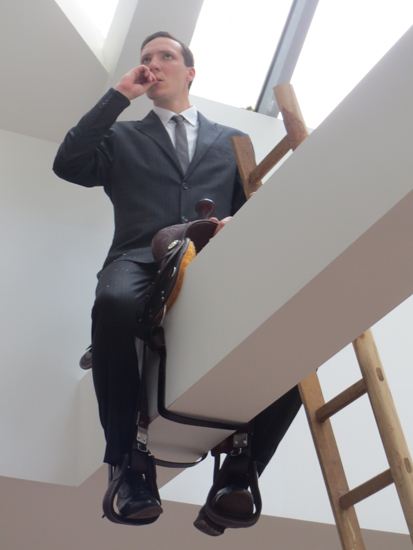
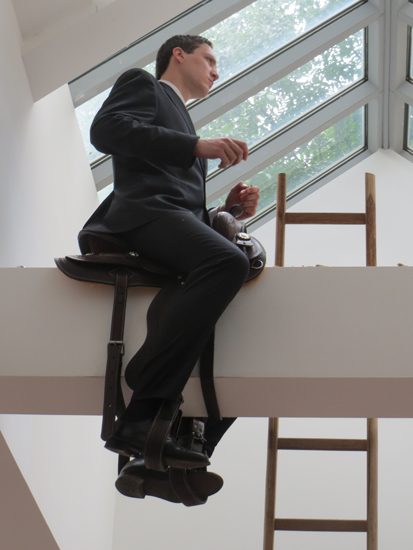
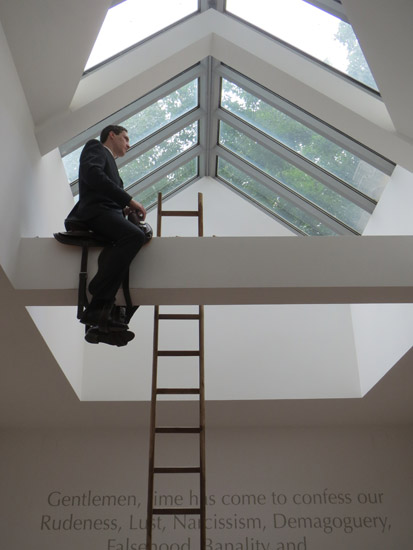
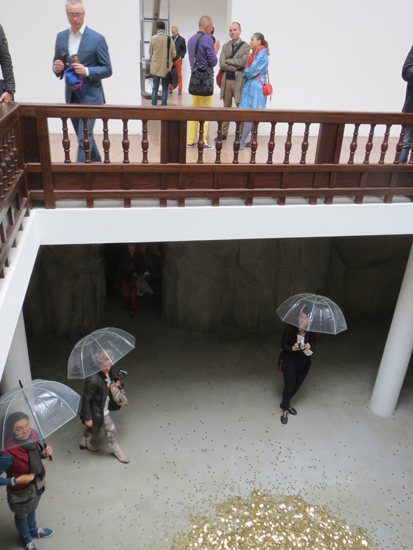
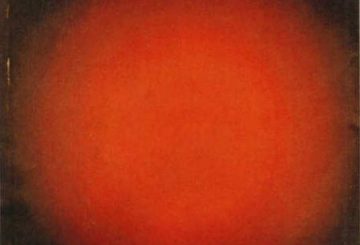

Pingback: The Rome Diaries – Video Blog 4, a sneak peak and some studio perspective : Todd Fuller